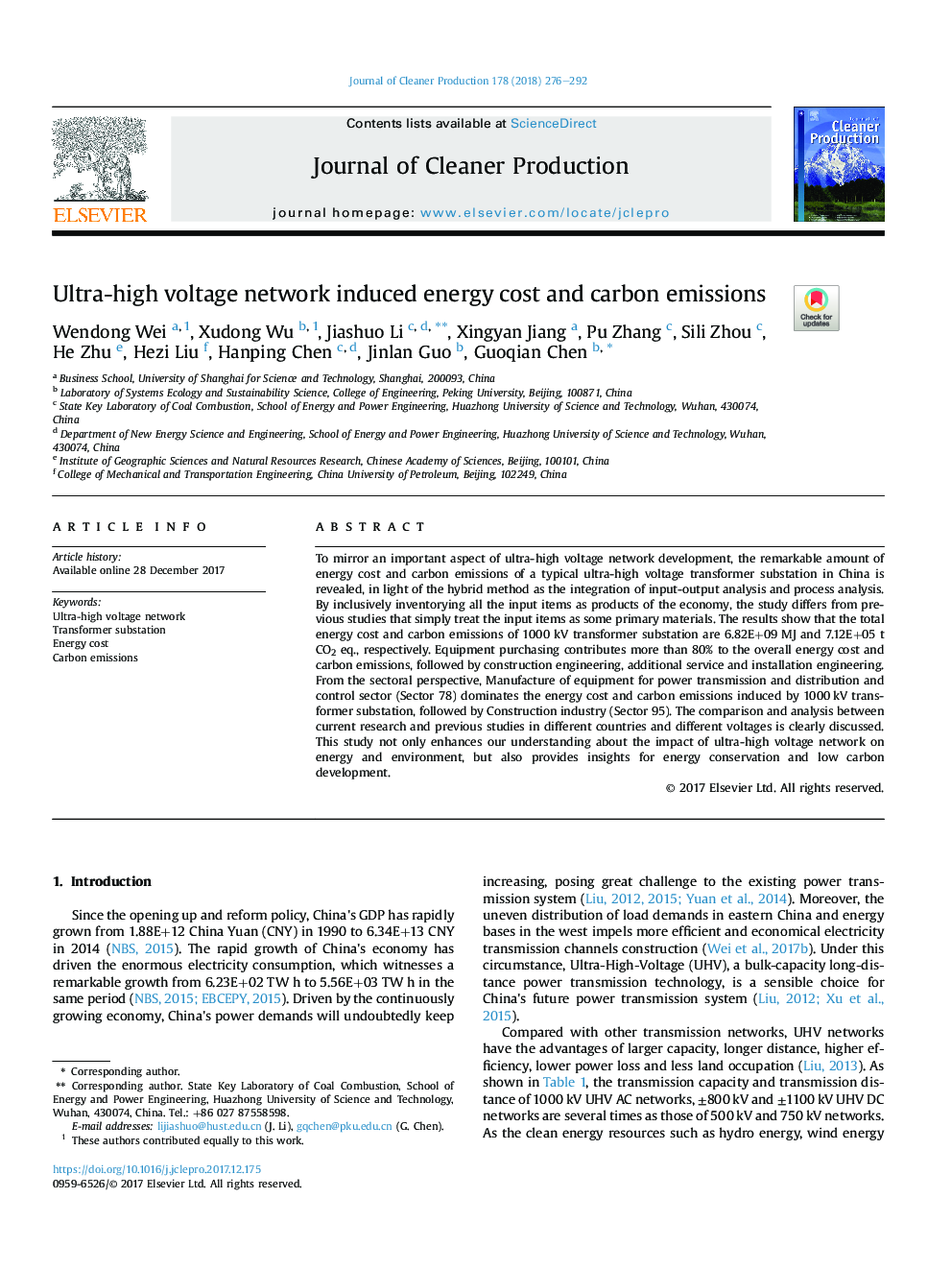| Article ID | Journal | Published Year | Pages | File Type |
|---|---|---|---|---|
| 8098376 | Journal of Cleaner Production | 2018 | 17 Pages |
Abstract
To mirror an important aspect of ultra-high voltage network development, the remarkable amount of energy cost and carbon emissions of a typical ultra-high voltage transformer substation in China is revealed, in light of the hybrid method as the integration of input-output analysis and process analysis. By inclusively inventorying all the input items as products of the economy, the study differs from previous studies that simply treat the input items as some primary materials. The results show that the total energy cost and carbon emissions of 1000 kV transformer substation are 6.82E+09 MJ and 7.12E+05 t CO2 eq., respectively. Equipment purchasing contributes more than 80% to the overall energy cost and carbon emissions, followed by construction engineering, additional service and installation engineering. From the sectoral perspective, Manufacture of equipment for power transmission and distribution and control sector (Sector 78) dominates the energy cost and carbon emissions induced by 1000â¯kV transformer substation, followed by Construction industry (Sector 95). The comparison and analysis between current research and previous studies in different countries and different voltages is clearly discussed. This study not only enhances our understanding about the impact of ultra-high voltage network on energy and environment, but also provides insights for energy conservation and low carbon development.
Keywords
Related Topics
Physical Sciences and Engineering
Energy
Renewable Energy, Sustainability and the Environment
Authors
Wendong Wei, Xudong Wu, Jiashuo Li, Xingyan Jiang, Pu Zhang, Sili Zhou, He Zhu, Hezi Liu, Hanping Chen, Jinlan Guo, Guoqian Chen,
